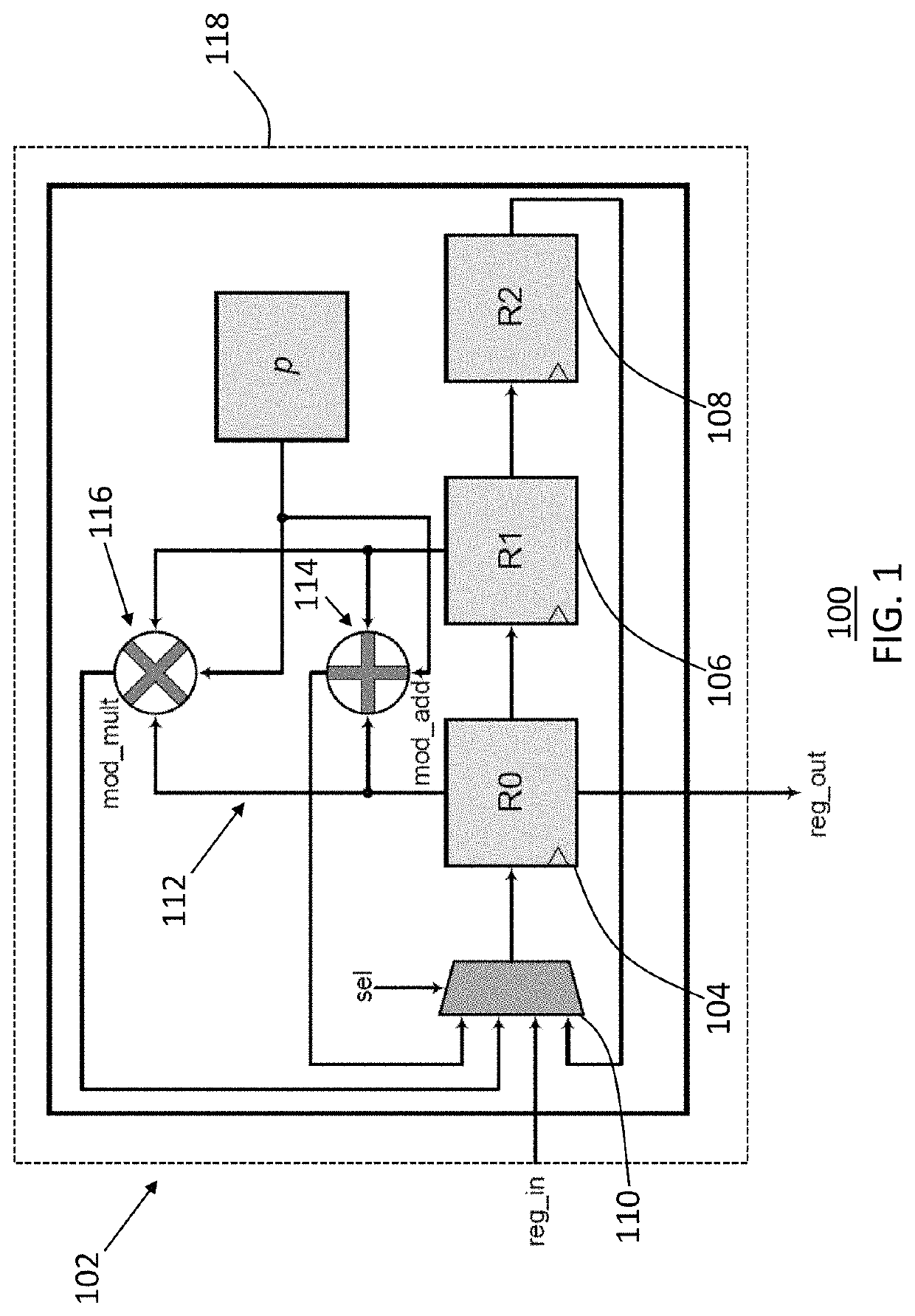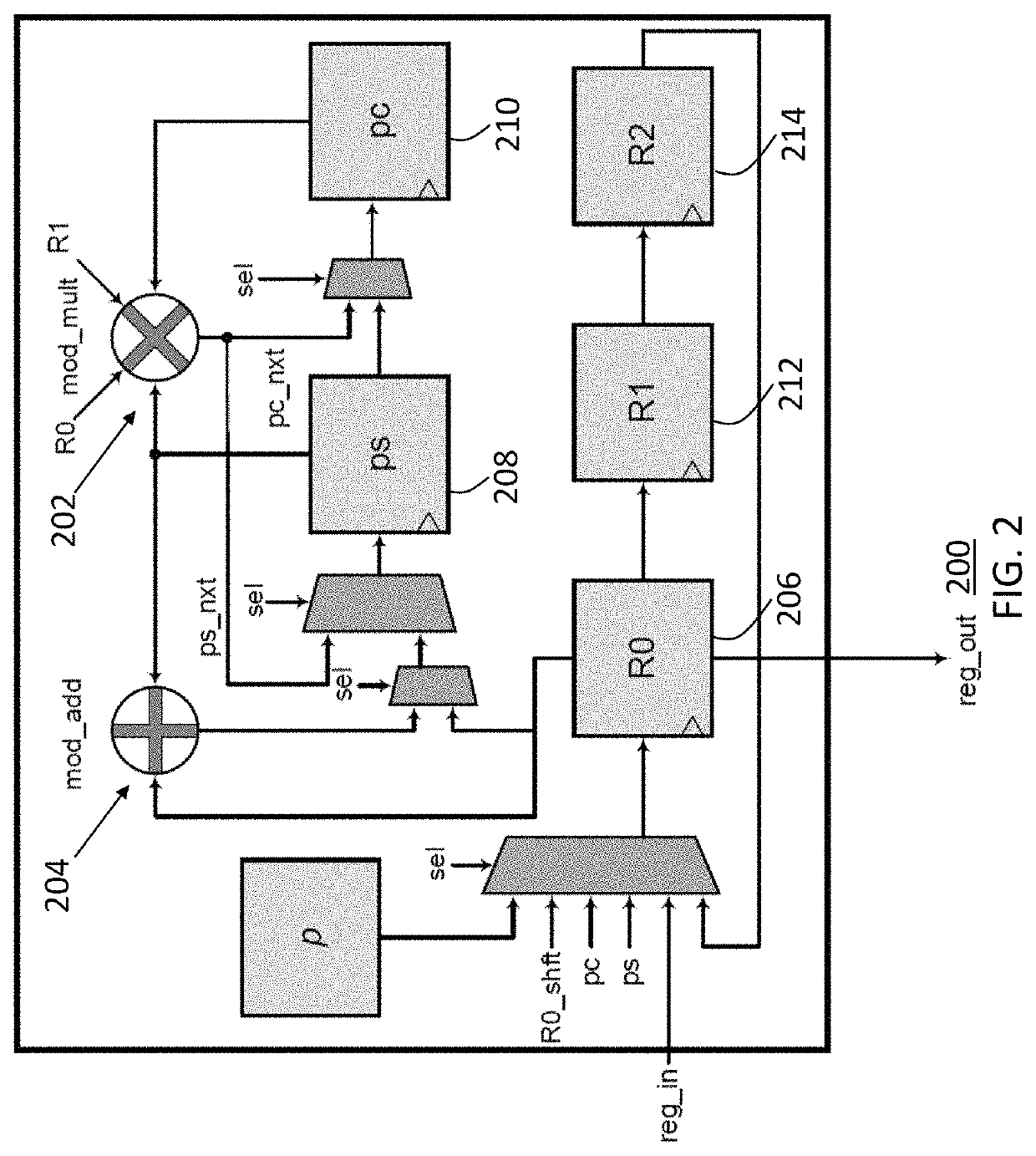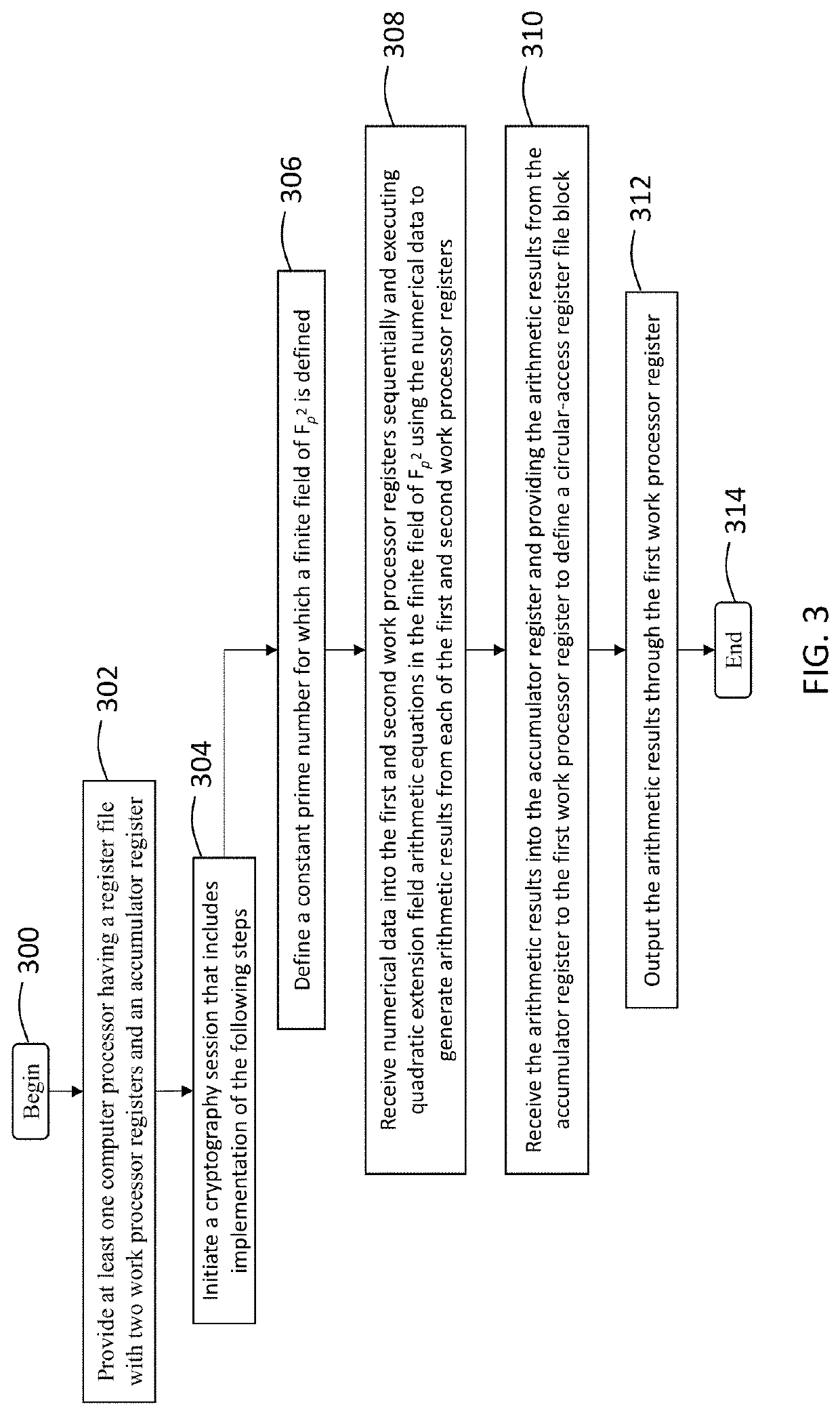Efficient architecture and method for arithmetic computations in post-quantum cryptography
a post-quantum cryptography and efficient architecture technology, applied in computation using non-denominational number representations, instruments, digital transmissions, etc., can solve the problems of large hardware or processing footprint, commercial impracticality, and inability to utilize such methods and systems, and achieve small processing footprint, small processing area, and reduced processing footprint in cryptosystems
- Summary
- Abstract
- Description
- Claims
- Application Information
AI Technical Summary
Benefits of technology
Problems solved by technology
Method used
Image
Examples
Embodiment Construction
[0025]While the specification concludes with claims defining the features of the invention that are regarded as novel, it is believed that the invention will be better understood from a consideration of the following description in conjunction with the drawing figures, in which like reference numerals are carried forward. It is to be understood that the disclosed embodiments are merely exemplary of the invention, which can be embodied in various forms.
[0026]The present invention provides a novel and efficient system and method for reducing the processing footprint of arithmetic computations for cryptosystems. More specifically, the system and method is directed toward a cryptosystem having a lightweight accelerator for arithmetic operations in Fp2 (hereinafter “Fp2 accelerator”) containing p2 elements, wherein “p” is a prime number, preferably a constant prime number for which Fp2 field is defined. The system is lightweight in that it is structurally and operably configured to minim...
PUM
 Login to View More
Login to View More Abstract
Description
Claims
Application Information
 Login to View More
Login to View More - R&D
- Intellectual Property
- Life Sciences
- Materials
- Tech Scout
- Unparalleled Data Quality
- Higher Quality Content
- 60% Fewer Hallucinations
Browse by: Latest US Patents, China's latest patents, Technical Efficacy Thesaurus, Application Domain, Technology Topic, Popular Technical Reports.
© 2025 PatSnap. All rights reserved.Legal|Privacy policy|Modern Slavery Act Transparency Statement|Sitemap|About US| Contact US: help@patsnap.com



